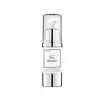What's inside
What's inside
 Key Ingredients
Key Ingredients

 Benefits
Benefits

 Concerns
Concerns

 Ingredients Side-by-side
Ingredients Side-by-side

Water
Skin ConditioningCoco-Caprylate
EmollientMethylpropanediol
SolventGlycerin
HumectantEctoin
Skin ConditioningButyrospermum Parkii Butter
Skin ConditioningIsoamyl Laurate
EmollientPotassium Cetyl Phosphate
EmulsifyingPanthenol
Skin ConditioningBakuchiol
AntimicrobialCamellia Sinensis Leaf Extract
AntimicrobialAllantoin
Skin ConditioningResveratrol
AntioxidantLecithin
EmollientCaffeine
Skin ConditioningSodium Acrylate/Sodium Acryloyldimethyl Taurate Copolymer
Emulsion StabilisingIsohexadecane
EmollientCarbomer
Emulsion StabilisingXanthan Gum
EmulsifyingCaprylyl Glycol
EmollientSodium Phytate
Sodium Hydroxide
BufferingLactic Acid
BufferingSodium Benzoate
MaskingPotassium Sorbate
PreservativeGlyceryl Stearate Citrate
EmollientPhenoxyethanol
PreservativePolysorbate 80
EmulsifyingBHT
AntioxidantWater, Coco-Caprylate, Methylpropanediol, Glycerin, Ectoin, Butyrospermum Parkii Butter, Isoamyl Laurate, Potassium Cetyl Phosphate, Panthenol, Bakuchiol, Camellia Sinensis Leaf Extract, Allantoin, Resveratrol, Lecithin, Caffeine, Sodium Acrylate/Sodium Acryloyldimethyl Taurate Copolymer, Isohexadecane, Carbomer, Xanthan Gum, Caprylyl Glycol, Sodium Phytate, Sodium Hydroxide, Lactic Acid, Sodium Benzoate, Potassium Sorbate, Glyceryl Stearate Citrate, Phenoxyethanol, Polysorbate 80, BHT
Water
Skin ConditioningSqualane
EmollientGlycerin
HumectantPropanediol
SolventPlukenetia Volubilis Seed Oil
EmollientDicaprylyl Carbonate
EmollientBakuchiol
AntimicrobialPhenoxyethanol
PreservativeSodium Caproyl Prolinate
HumectantHydroxyethyl Acrylate/Sodium Acryloyldimethyl Taurate Copolymer
Emulsion StabilisingCarbomer
Emulsion StabilisingSodium Hydroxide
BufferingEthylhexylglycerin
Skin ConditioningSodium Stearoyl Glutamate
CleansingPolysorbate 60
EmulsifyingPhytic Acid
Glyceryl Polyacrylate
Sorbitan Isostearate
EmulsifyingTocopherol
AntioxidantWater, Squalane, Glycerin, Propanediol, Plukenetia Volubilis Seed Oil, Dicaprylyl Carbonate, Bakuchiol, Phenoxyethanol, Sodium Caproyl Prolinate, Hydroxyethyl Acrylate/Sodium Acryloyldimethyl Taurate Copolymer, Carbomer, Sodium Hydroxide, Ethylhexylglycerin, Sodium Stearoyl Glutamate, Polysorbate 60, Phytic Acid, Glyceryl Polyacrylate, Sorbitan Isostearate, Tocopherol
 Reviews
Reviews

Alternatives
Ingredients Explained
These ingredients are found in both products.
Ingredients higher up in an ingredient list are typically present in a larger amount.
Bakuchiol is a plant-derived antioxidant (it's vegan!). It is often called the replacement for retinol although it is not part of the same family.
It has similar effects as retinol: skin smoothing, reducing discoloration, and preventing wrinkles. It does not cause as much irritation as traditional retinoids.
Bakuchiol works by breaking down free radicals and stimulating collagen production in skin.
Combining bakuchiol with retinol will not have adverse side effects. Studies show using them will just boost the benefits. Bakuchiol is also found to help stabilize retinol.
While bakuchiol does not make the skin more sun sensitive, we recommend wearing SPF on a daily basis.
Read more about traditional retinol
Learn more about BakuchiolCarbomer is a polymer of acrylic acid. Its main role is to create a gel consistency.
A high amount of carbomer can cause pilling or balling up of products. Don't worry, most products contain 1% or less of carbomer.
Glycerin is already naturally found in your skin. It helps moisturize and protect your skin.
A study from 2016 found glycerin to be more effective as a humectant than AHAs and hyaluronic acid.
As a humectant, it helps the skin stay hydrated by pulling moisture to your skin. The low molecular weight of glycerin allows it to pull moisture into the deeper layers of your skin.
Hydrated skin improves your skin barrier; Your skin barrier helps protect against irritants and bacteria.
Glycerin has also been found to have antimicrobial and antiviral properties. Due to these properties, glycerin is often used in wound and burn treatments.
In cosmetics, glycerin is usually derived from plants such as soybean or palm. However, it can also be sourced from animals, such as tallow or animal fat.
This ingredient is organic, colorless, odorless, and non-toxic.
Glycerin is the name for this ingredient in American English. British English uses Glycerol/Glycerine.
Learn more about GlycerinPhenoxyethanol is a preservative that has germicide, antimicrobial, and aromatic properties. Studies show that phenoxyethanol can prevent microbial growth. By itself, it has a scent that is similar to that of a rose.
It's often used in formulations along with Caprylyl Glycol to preserve the shelf life of products.
Sodium Hydroxide is also known as lye or caustic soda. It is used to adjust the pH of products; many ingredients require a specific pH to be effective.
In small amounts, sodium hydroxide is considered safe to use. However, large amounts may cause chemical burns due to its high alkaline.
Your skin has a natural pH and acid mantle. This acid mantle helps prevent harmful bacteria from breaking through. The acid mantle also helps keep your skin hydrated.
"Alkaline" refers to a high pH level. A low pH level would be considered acidic.
Learn more about Sodium HydroxideWater. It's the most common cosmetic ingredient of all. You'll usually see it at the top of ingredient lists, meaning that it makes up the largest part of the product.
So why is it so popular? Water most often acts as a solvent - this means that it helps dissolve other ingredients into the formulation.
You'll also recognize water as that liquid we all need to stay alive. If you see this, drink a glass of water. Stay hydrated!
Learn more about Water